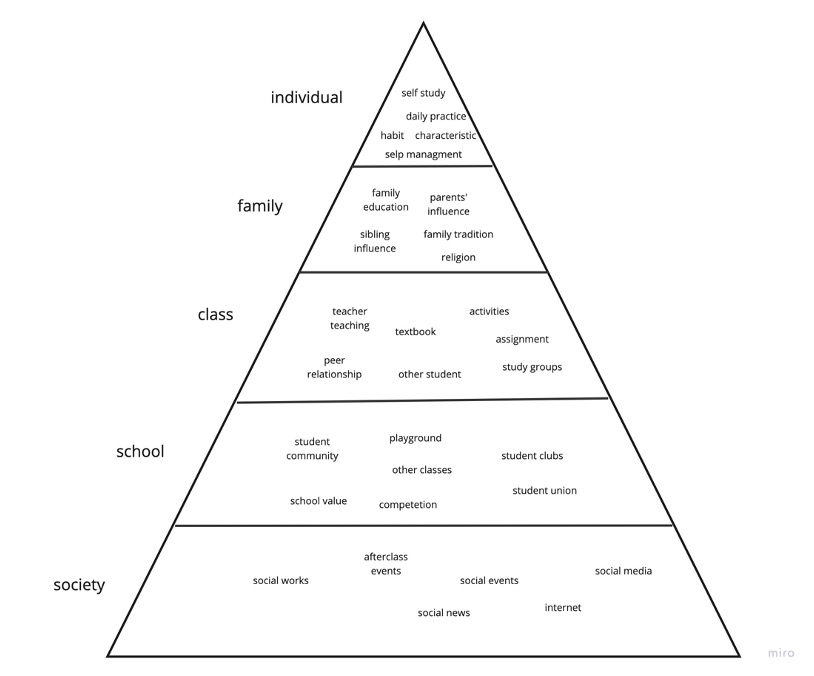Project link:
https://drive.google.com/file/d/1fIuvafB8F-MnJPV0f2i8kghGVTQIIUqJ/view?usp=sharing
Project background:
I am a superfan of robot animation and I have a lot of models. So, my friends always ask me why some robots are cool but the others are “ugly”? But the fact is that they are not ugly, they just have some features which are not belong to this age.
Project intention:
So, first question arises: Why is the design language of robot always changing in robot animation? What caused it, just because of aesthetic reasons? Or how many other reasons?
In my investigation, I found that aesthetics only accounts for a small part, while the international political background, technological development, and ideological changes are the key factors affecting the robot animation design language.
So, I use the most famous Astro Boy as a clue to tell the audience a story, and use a simple AVG game to illustrate my critical points to explain it to you.
System map:
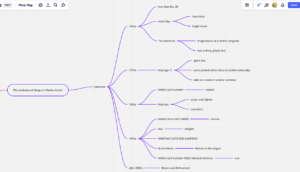
Prototypes:
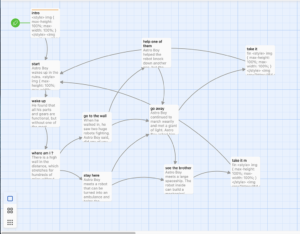
Preview:
- International political background


Astro Boy was born shortly after the end of World War II. Everything was destroyed after World War II, so people need a new hope to place. So Astro Boy appeared in front of the audience as a child, his skin shining, representing new technology and new materials.
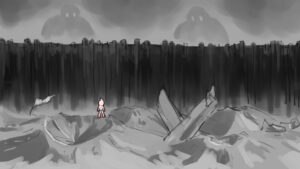


During the Cold War, the animation of robots changed. They became larger and larger, and their style changed from bright to dark.
The black wall is inspired by Churchill’s Iron Curtain Speech, and the giant robots represent two super countries which are Soviet Union and united states.
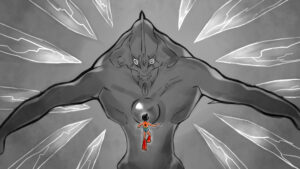
During the bubble economy, many youth undertakings in Japan, They became the “Beat Generation” “They have nothing to do but watch cartoons at home. This is an animation, EVA. EVA is more like a religious animation than robot animation. He tells us more about how to save our soul and forgiving himself. You are already great, and you don’t need to work hard. In the era of economic collapse, when everyone is eager to be saved, robot design is more like a god.
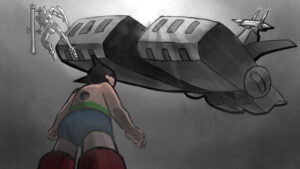
World War II also had an impact on the subsequent animation
Gundam is an anti-war animation. Zeon, the villain in the animation, thought that the Nazis were the prototype, and finally he was defeated.
This reflects that people hate wars
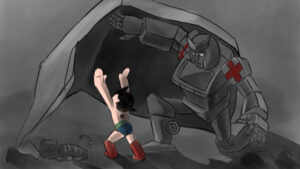
With the development of science and technology, many high technologies have been integrated into robot design, such as deformable sprinklers and ambulances
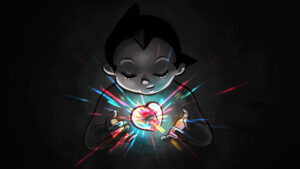
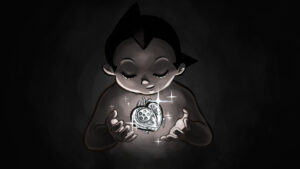
The last two endings actually represent two branches of today’s robot animation:The Super robot animation and Realistic robot animation
User test and feedback:
I received a lot of feedback. Most of them praised me for spending a lot of energy on the final output, and the presentation effect was very good, but there was still a lack of concept expression, and the content was not very clear. I think this may always be a defect in my work, and I will continue to improve it.
Bibliography:
Japanese Animation Guide: The History of Robot Anime:https://mediag.bunka.go.jp/article/article-16539/
Dennis Redmond, Anime and East Asian Culture: Neon Genesis Evangelion:
https://www.tandfonline.com/doi/full/10.1080/10509200500486205
Marc Steinberg, Immobile Sections and Trans-Series Movement: Astroboy and the Emergence of Anime
https://journals.sagepub.com/doi/abs/10.1177/1746847706068903
Cocoro Books, Kazuhisa Fujie, Martin Foster, Neon Genesis Evangelion: The Unofficial Guide
https://books.google.com.hk/books?hl=zh-CN&lr=&id=2SX3lUu_IPAC&oi=fnd&pg=PA7&dq=mazinga+Z&ots=6HoJP_vSbQ&sig=M9qngW_sHz_lek7ck7QgNltwGtA&redir_esc=y#v=onepage&q=mazinga%20Z&f=false
William Ashbaugh, CONTESTING TRAUMATIC WAR NARRATIVES:
SPACE BATTLESHIP YAMATO AND MOBILE SUIT GUNDAM
https://brill.com/downloadpdf/book/9789004193215/Bej.9789004182981.i-362_013.pdf
Yoshiyuki Tomino, Mobile Suit Gundam: Awakening, Escalation
https://books.google.com.hk/books?hl=zh-CN&lr=&id=xPMaA9Y3w9YC&oi=fnd&pg=PA7&dq=gundam&ots=vFgBjqOkdo&sig=1GdlfR1BYt3H0NFSmsypx9NyzTE&redir_esc=y#v=onepage&q=gundam&f=false
Yoshiyuki Tomino, Gundam and the Future of Japanoid Art
https://muse.jhu.edu/article/368557
Tze-Yue G. Hu,Masao Yokota, Japanese Animation: East Asian Perspectives
https://books.google.com.hk/books?hl=zh-CN&lr=&id=zCNlAwAAQBAJ&oi=fnd&pg=PA223&dq=The+Super+Dimension+Fortress+Macross&ots=lwBg9aXtRW&sig=V4xTb06PSH7_yAd-x6NuxuL9OWc&redir_esc=y#v=onepage&q=The%20Super%20Dimension%20Fortress%20Macross&f=false














